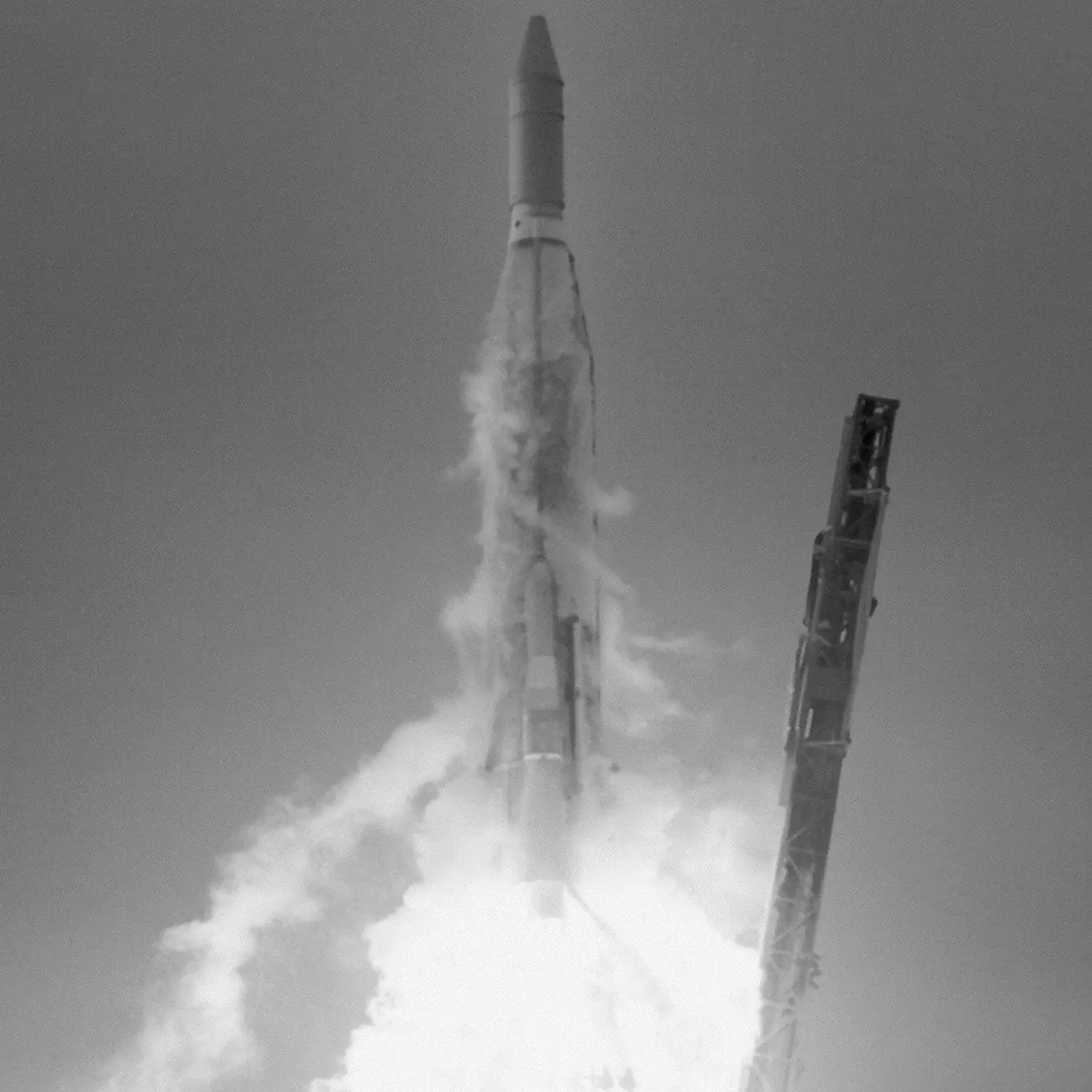P72-2
Launch Failure
Liftoff Time (GMT)
00:51:00
Sunday April 13, 1975
Mission Details
Launch Notes
Rocket damaged by explosion of LOX/kerosene glob in the flame trench during launch, leading to sustainer engine failure during ascent.
RM 20 (P72-2)
RM 20 (Radiometer 20) was a low-altitude satellite in a circular orbit carrying four experiments. Two of the experiments were to study radiation from the Earth's horizon. A third experiment was to observe solar extinction through the stratosphere, and the fourth was to study ionospheric radio propagation. The spacecraft experiment support equipment included a three-axis stabilization system and a tape recorder. The main instruments were the highly complex RM-20A/B satellite sensors, which were intended to collect infrared target and background data while approximating several features of potential operational concepts. The RM-20A was a scanning instrument operating within two spectral regions with sophisticated onboard data processing such as automatic thresholding and field-of-view sectoring. The instrument was gimbaled and incorporated a passive thermal control system, and produced data at 1.024 Mbps. The RM-20B was a mosaic sensor operating in one selected spectral region. It was gimbaled to compensate for orbital and earth rotation and provided data at 512 Kbps. The following experiments were on board: - UV Horizon (SAMSO-206) - Was to map the UV spectrum at Earth's horizon. - IR Mapping (SAMSO-207) - Was to map the celestial sphere in infrared. - Aerosol Monitor (ONR-123) - Was to measure the concentration and vertical distribution of aerosols in the stratosphere by observing solar extinction. - Wide Band Radio Propagation (DNA-002) - An experiment to investigate ionospheric radio propagation.
1 Payload
204 kilograms
Rocket

Launch Site
Stats
Atlas-Star
1st
Mission
1st
Mission of 1975
1975
31st
Orbital launch attempt
